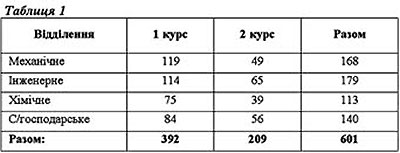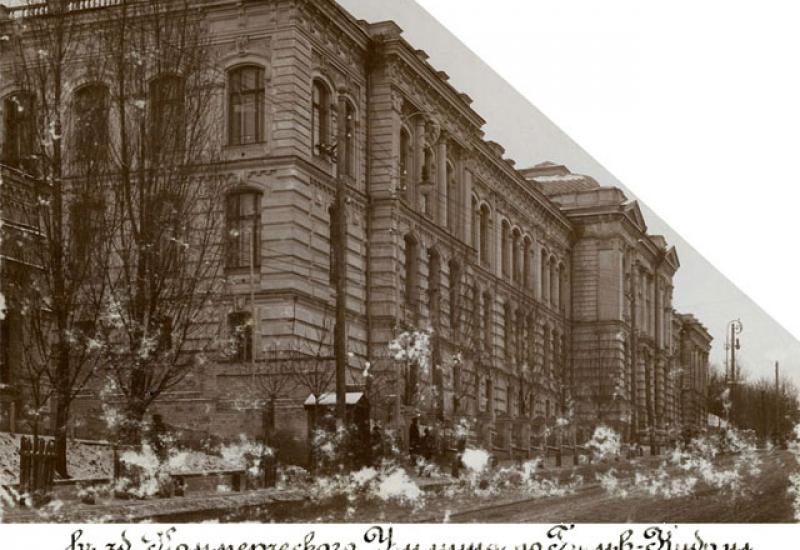In the department of historical rarities of Scientific and Technical Library NTUU "KPI" there are saved many rare editions, books, records, albums, and so on. The attention is attracted by a small volume book "Status Report Kyiv Polytechnic Institute of Emperor Alexander II during 1899.".
For researchers studying the history of the founding and formation of the Kiev Polytechnic University, this book is an outstanding interest. After all the information that is fed into it - this is the primary source of historical facts, the description of the activities of the KPI in the first years after the opening. It really is a unique publication. Its uniqueness lies primarily in the unique information, this edition offers the reader.
It is known that in 1898 – the year of the KPI foundation – there began training 360 students, distributed among the 4 departments of the Institute as follows: on the mechanical – 109, on engineering – 101, on Chemical - 63, in the agricultural - 87.
 However, not all of them were able to reach the transferable examinations. In 1899, 208 students were excluded from the institute. Despite this, in order to increase the number of students in the 2nd course it was decided to permit the conversion of autumn competitive examinations and an additional enrollment of students in the 2nd year. The composition of the Kiev Polytechnic after a competitive selection of 1 and 2 courses autumn 1899 year presented in Table 1.
However, not all of them were able to reach the transferable examinations. In 1899, 208 students were excluded from the institute. Despite this, in order to increase the number of students in the 2nd course it was decided to permit the conversion of autumn competitive examinations and an additional enrollment of students in the 2nd year. The composition of the Kiev Polytechnic after a competitive selection of 1 and 2 courses autumn 1899 year presented in Table 1.
On 1 January 1900 the total number of students is 589 people. Interesting information was included in the report on the distribution of students by religion and social class in 1899 (see. Table. 2).
In 1899, there was continued the construction of the institute’s building. The first course was held their classes in the Commercial College. Renting of this space was continued until the fall of 1899, after which all four branches KPI were moved to the chemical building, which at that time was built.
 Very comfortable were 12 large rooms with an area of 50 square fathoms each. 4 of them have been assigned for training in chemistry, 2 - for an office and laboratory facilities for practical training in physics, in another room – was regarded as the temporary auditorium for lectures connected branches of the second course, the remaining 5 room were alloted for training students drawing and painting. It was fully functioned the big chemical audience. In other rooms there were equipped zoological and biological classrooms, laboratories, small auditorium, a library, the office, reception, and the like. Thus, in the Chemical Building it was accommodated all of the institute, albeit with considerable inconvenience because of narrowness.
Very comfortable were 12 large rooms with an area of 50 square fathoms each. 4 of them have been assigned for training in chemistry, 2 - for an office and laboratory facilities for practical training in physics, in another room – was regarded as the temporary auditorium for lectures connected branches of the second course, the remaining 5 room were alloted for training students drawing and painting. It was fully functioned the big chemical audience. In other rooms there were equipped zoological and biological classrooms, laboratories, small auditorium, a library, the office, reception, and the like. Thus, in the Chemical Building it was accommodated all of the institute, albeit with considerable inconvenience because of narrowness.
Classes of the students on all academic subjects could be called quite satisfactory. They are particularly well studied in laboratories and offices; Many students devoted much more time than it was necessary on the schedule, and they sometimes worked until late at night. As well the students used the drawings and painting; except classes on weekdays, which were stopped only after dark, it was necessary to open the drawing rooms for a few hours on Sundays to allow the to perform the compulsory work. This was necessary in those cases where the delay occurred in execution of work due to illness or other reasons. Less satisfactory was attending of lectures, but the leadership of the Institute hoped that over the years the students KPI establish a correct outlook on the benefits and importance of oral teaching of the fundamentals of science.
Classes for mathematical sciences were attended by the students of the institute quite well. Because these classes were dedicated to solving problems in all sections of the course, then on the basis of them the successful students can be exempted from exams. In this way, the classes were well-regulated. They were distributed evenly throughout the academic year. When the short duration of the term set by the Charter Institute for conversion exams (not more than 20 days), the transition of students to senior classes, in most cases, was possible only for those students who are on the basis of annual activities exempted from one or more exams. The value of this procedure for conducting the educational process gradually assimilated by students, and the number of persons exempted from examination, with the passage of time is significantly increased. Thus, in the years 1898-99 in the transition from I to II course there were exempt from exams 97 students of 189 academic subjects, and the following year there were released from examinations 254 students of 495 academic subjects.
Material provision of KPI students as well as all other higher education institutions in the country, was very low. Fortunately, the Constitution of the Institute allowed to exempt from paying a significant number of students (up to half of the total composition), as every year a large number of young people could be dismissed for failure to pay tuition fees.
Institute was helped by many private benefactors who have established scholarships for students. During the reporting year, the number of such scholarships was 16 and they were invested in the sum of 90,900 rubles.
Meanwhile, construction of the buildings of the Institute was continued. Great importance has acquired the activities of the Building Commission. In 1899 the work of the Commission was attended by Professors KPI: Yu.M.Vagner, E.P.Votchal, S.M.Reformatsky, K.O.Zvorikin, M.I.Konovalov, G.G.De-Metz, P.R. Slozkin, M.P.Chirvinsky. The duties of the members of the Building Commission included the development of proposals for the selection of equipment for training and support units of the Institute, its preparation and on-site installation, the organization of the financial workflow, reporting to the Board of the Institute for purchases. Equipment for training and support units, as a rule, was purchased from the funds held by the Building Commission, however, in part, for the same purpose the funds allocated in the budget for the maintenance of the KPI. As an example, one can give the distribution of this amount to the various needs for 1899 (see. Table. 3).
From this distribution it implies that the lion's share of expenditure went to the upkeep of the Institute. In second place in terms of the costs were for heating and lighting of premises, together with the costs of cleaning and maintenance workers, these costs amounted to almost a third of the cost of the personnel of the Institute.
It is interesting the information on the teaching stuff of the Institute, considerably enlarged in 1899 in connection with the opening of the second course.
For example, in 1899 from the Moscow Agricultural Institute in the Department of Chemistry at the KPI there was transferred the ordinary professor M.I.Konovalov, who was given the post of the acting dean of chemical section. A few years later, namely in 1902, M.I.Konovalov become rector of KPI.
In the same 1899 from the Imperial Kazan University at the Department of Theoretical Mechanics KPI there was transferred Doctor of Applied Mathematics, outstanding mathematician O.P.Kotelnikov.
The famous artist M.K.Pimonenko - author of numerous paintings from the life of the Ukrainian people, was also attracted to the teaching of drawing in the KPI.
In that year, the staff of the Kiev Polytechnic was joined by other talented professors and lecturers.
Many of the professors and teachers KPI combined the work in teaching there and in other institutions or worked in other organizations. For example, V.E.Ermakov, B.Ya.Bukreev, G.G.De-Metz S.G.Navashin, S.M.Reformatsky - were professors at the University of St. Vladimir. M.K.Pimonenko taught drawing in the Kyiv Drawing School, P.R.Slozkin was in charge of the control laboratory of the Ministry of Agriculture and State Property with agricultural syndicates. V.L.Kirpichov and K.O.Zvorikin worked in the Kiev branch of the Imperial Russian Technical Society, and V.L.Kirpichov was deputy chairman of the office.
As you can see, the report for 1899 was prepared by the authors in detail. And, although the report is small in a volume, but it fully represents the life in Kyiv Polytechnic.

